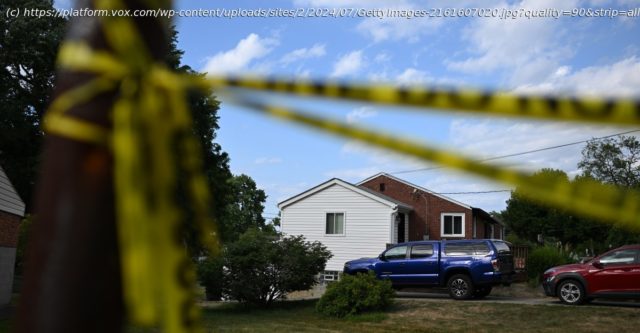The Trump assassination attempt and many other public crimes in America are committed by isolated young men.
We don’t know much yet about the shooter who killed one man and wounded two others in an apparent assassination attempt on Donald Trump on Saturday.
We do know that he was 20 years old, and male.
Those two facts — and his role in Saturday’s shocking crimes — put him in a small but frightening group: He’s now among a handful of young American men who, driven by psychological distress, hatred, or something else, commit highly public acts of violence with powerful guns.
He joins a list of young men that includes the two high school seniors who killed 13 people at Columbine High School in 1999; the 24-year-old who killed 12 people at a movie theater in Colorado in 2012; the 19-year-old who killed 17 people at a high school in Parkland, Florida, in 2018; the 18-year-old who killed 10 people at a Buffalo supermarket the same year; and, unfortunately, many more.
“Across the board, young men are responsible for the vast majority of gun violence in this country,” said Jillian Peterson, a professor of criminology and criminal justice at Hamline University and executive director of the Violence Prevention Project Research Center. That’s especially true for public mass shooters, 98 percent of whom are male and a growing number of whom are in their late teens or early 20s.
The reasons young men turn to public violence are many and complicated, but experts say that common factors include access to guns that has grown even easier in recent years and a sense of social isolation deepened by the pandemic. That isolation can lead young men to seek out community in dangerous places, including a growing number of online communities that glorify violence.
Troublingly, each new shooting reinforces a kind of cultural script, Peterson and others say: For young men in distress, murdering people in public has come to seem like an increasingly viable option. Before the Columbine murders, school shootings were unthinkable. Now, though they remain rare in absolute numbers, they can feel devastatingly commonplace, robbing children and families of a sense of safety in their neighborhood schools. For a small group of troubled people, the dark examples of young men who have gone before have made public killings “a more realistic thing you can plan,” Peterson said.
Much about the life and motives of the Trump rally shooter remains unknown, including the details of what led him to plan and carry out his crime on Saturday. But that crime was nonetheless part of a larger pattern in America, and understanding that pattern may be the first step to changing it.
The public mass shooters Peterson has studied are “typically men who have been through a trauma background, who are isolated, who are disconnected,” she said. They often experience self-loathing or suicidal thoughts, and eventually come to find a grievance, someone or something they blame for their feelings.
One young man, for example, experienced bullying and mental health issues for years and ultimately became consumed with rage at what he perceived as his rejection by women. In 2014, the 22-year-old killed six people and wounded 14 others in Isla Vista, California, before dying by suicide.
Another young man, who at age 21 killed nine congregants at Emanuel African Methodist Episcopal Church in Charleston, South Carolina, described depression and friendlessness leading up to the shooting and was diagnosed with multiple mental disorders, including social anxiety.






